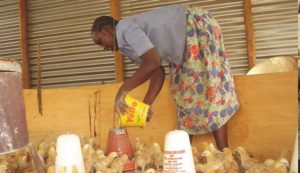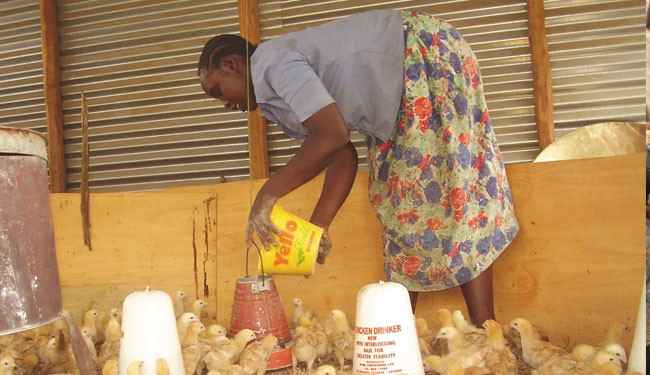Context: The Kenyan labour market is characterized by youth labour market entrants with different educational attainment characteristics. The labour market entrants include an estimated 200,000 persons who never attended primary school; about 300,000 who dropped out of primary school; close to 250,000 who complete primary school education but did not join secondary school; approximately 180,000 secondary school dropouts; about 250,000 who have completed secondary school but did not join any tertiary institutions; and about 45,000 who drop out of tertiary institutions. Knowledge and education are key factors to the full and effective participation of the youth in the process of social, economic and political development. Increased attention to improving participation rates of young people, especially the disadvantaged and marginalized youth is needed to ensure that the youth acquire knowledge, capacities, skills and ethical values needed to fulfil their roles as agents of development, good governance, social inclusion, tolerance and peace.
Implementation of programme/ initiative: The Kenya Value Girls Program was a four-year (2008-2012) program co-funded by Nike Foundation and United States Agency for International Development (USAID) through the Global Development Alliance at a budget of US$ 4.7 million. The program was implemented by Cardno Emerging Markets in partnership with Kenya Women Finance Trust (KWFT), Jiinue Holdings, Cooperative Bank of Kenya, KenChic Ltd and KickStart. The aim of the program was to raise the incomes of 2,000 young girls and women aged 14-24 years who have dropped out of school from communities around lake Victoria in the Western and Nyanza regions of Kenya. The program implemented in six sub counties in the two regions and covered 39 beaches along lake Victoria. The overarching goal of the program was to improve the socio-economic welfare of girls and young women by increasing and strengthening their participation in proven, high return segments of a select number of value chains. The program helped young women to explore and undertake livelihoods activities in horticulture and poultry value chains. It, therefore, aimed to ensure young women’s security by offering access to safer and more lucrative livelihood options; increasing their participation in high growth value chains; and developing and communicating an effective model for economically empowering girls and young women. It also integrated the broader social skills-building in order to take into account the special requirements of a vulnerable group in implementing a value-chain approach.
Main challenges: Majority of girls and young women in the programme had either no livelihood activity or were engaged in economic activities that were not particularly beneficial or safe for them. This means that most of the girls and young women were inexperienced in enterprise management. This was addressed by developing and implementing a short-tailor made and practical training for the girls and young women. The programme also suffered from high dependency mentality where the girls and young women expected to be paid allowances to participate in programme activities. This was a difficult but critical attitude to combat. It greatly contributed to some girls and young women dropping out of the programme. To address this, the programme stuck to the market-oriented design that pays no allowances as an incentive to participation in the programme. It also introduced the use of smart subsidies such as matching grants of additional chicks for successful chick breeding, and a guarantee facility for the loans. These have been instrumental in shaping proper incentives within the programme. Finally, targeting of the girls by age was a complicated process. This was worsened by difficulty in verifying ages and the tendency of the communities to challenge the targeting criteria.
Results achieved: The Value Girls Program increased coverage from 8 beaches in 2009 to 41 by 2011. It directly benefited more than 2,400 young women by helping them to establish small businesses in poultry and vegetable production sectors. It facilitated the girls to be organized into 230 groups of 5-6 members and 55 clusters with 15-30 members. Of the clusters, 17 were registered with the county governments. The program also facilitated formal training of 163 of the 220 mentors. Also, 674 girls were trained in financial literacy. By the end of the program, participants’ incomes had increased by an average of 51 per cent.
Moving Forward: The programme observed that young girls and women who had the moral support of their boyfriends or husbands were more successful. Consequently, Value Girls has been working to integrate boys and men in the programme while continuing to give priority to young women. It is believed that this will promote more equitable gender norms and further reduce the potential for boys or men to undermine activities focused on girls. This is based on the adage that “changing a girls’ life requires changing his mind”. The goals is to further support specific activities for boys and men that serve as a key incentive to promote more equitable gender norms while addressing the critical issue of idle youth becoming more prone to violence.
Replicability: The unique design of the Value Girls Programme allows it to not only measure its success and lessons learnt at the end of the programme but throughout the entire life of the project. It can be used as a model for achieving effective and sustainable results when targeting vulnerable groups.
References:
Cardno Emerging Markets (undated). “Livelihoods for Very Poor Girls and Young Women: The Value Girls Programme-The “Girls Effect”, https://www.microlinks.org/sites/default/files/resource/files/Case_Study_1_Value_Girls_0.pdf, viewed on 29/4/2017


Project Details
Date: July 24, 2017
